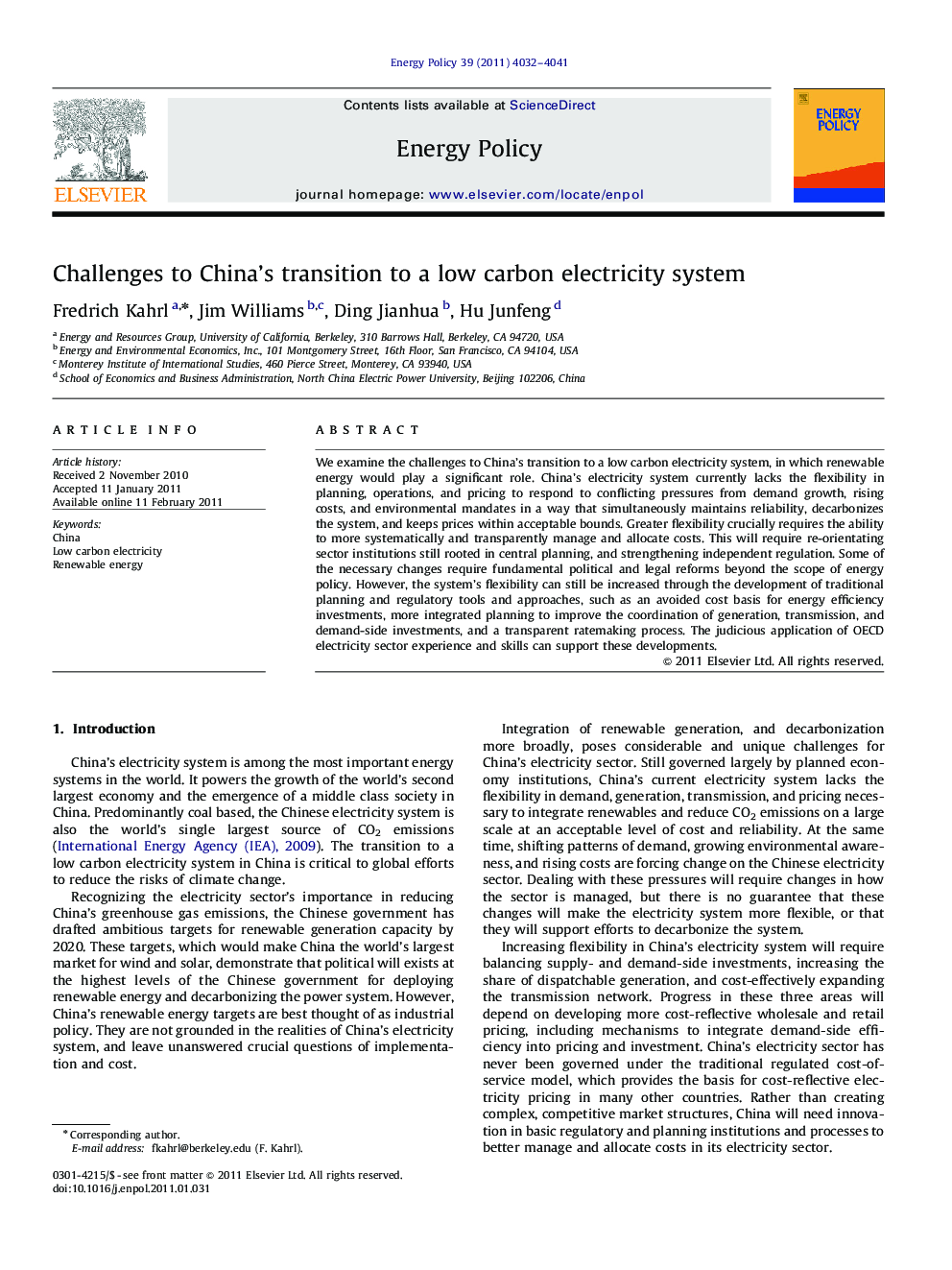| Article ID | Journal | Published Year | Pages | File Type |
|---|---|---|---|---|
| 993489 | Energy Policy | 2011 | 10 Pages |
We examine the challenges to China's transition to a low carbon electricity system, in which renewable energy would play a significant role. China's electricity system currently lacks the flexibility in planning, operations, and pricing to respond to conflicting pressures from demand growth, rising costs, and environmental mandates in a way that simultaneously maintains reliability, decarbonizes the system, and keeps prices within acceptable bounds. Greater flexibility crucially requires the ability to more systematically and transparently manage and allocate costs. This will require re-orientating sector institutions still rooted in central planning, and strengthening independent regulation. Some of the necessary changes require fundamental political and legal reforms beyond the scope of energy policy. However, the system's flexibility can still be increased through the development of traditional planning and regulatory tools and approaches, such as an avoided cost basis for energy efficiency investments, more integrated planning to improve the coordination of generation, transmission, and demand-side investments, and a transparent ratemaking process. The judicious application of OECD electricity sector experience and skills can support these developments.
Research highlights► China's electricity system currently lacks the flexibility to integrate renewables and reduce CO2 emissions on a large scale at an acceptable cost and level of reliability. ► The challenges to increased flexibility are more institutional than technological. ► Chinese government agencies need new approaches to basic power system planning and ratemaking. ► OECD countries can help address these challenges through the transfer of “soft” technologies.
